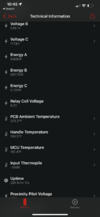These past few weeks, I've noticed some odd behavior on my Model 3 charging via AC on a Wall Connector. It will start at 48 amps, and charge at 48a for a decent chunk of the charge cycle (say 10% to 50%), and then it will slowly start dropping the amperage from 48 down to around 40 amps. Sometimes it does this with the battery in the 20 to 40% range after a few minutes of charging. When I check the car, or the app, I can't even raise the limit back to 48.
Here's the details:
2018 Model 3 long range. I've had this car for 3 years, and its been using this same exact wall connector the whole time.
Gen 3 wall connector on a 60amp breaker. This has ALWAYS charged my car at a full 48amps for the past 3 years of ownership, up until recently
I've noticed the amperage drop off when looking at the app, or the car, and I can verify it in Teslafi. The charging cables aren't getting hot, and the car is kept in a garage. The voltage never drops below 239.
Is this something new with the latest updates? I can't tell if its the car asking for a lower amperage or the wall connector.
Here's the details:
2018 Model 3 long range. I've had this car for 3 years, and its been using this same exact wall connector the whole time.
Gen 3 wall connector on a 60amp breaker. This has ALWAYS charged my car at a full 48amps for the past 3 years of ownership, up until recently
I've noticed the amperage drop off when looking at the app, or the car, and I can verify it in Teslafi. The charging cables aren't getting hot, and the car is kept in a garage. The voltage never drops below 239.
Is this something new with the latest updates? I can't tell if its the car asking for a lower amperage or the wall connector.



